Inspiration from the Turn of Century American Garden Movement
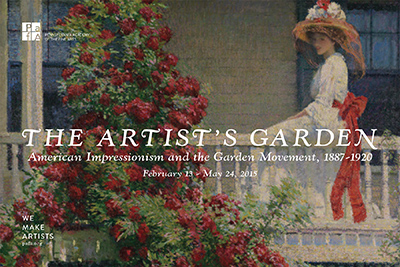 Spring is a time to be inspired. Pennsylvania Academy of the Fine Arts (PAFA) is currently exhibiting how the Turn of Century Garden Movement (1887-1920) inspired American impressionism. As a modern gardener it is fascinating to see the plants which inspired these American artists and gardeners.
Spring is a time to be inspired. Pennsylvania Academy of the Fine Arts (PAFA) is currently exhibiting how the Turn of Century Garden Movement (1887-1920) inspired American impressionism. As a modern gardener it is fascinating to see the plants which inspired these American artists and gardeners.
While cottage-style gardening is not often used in our modern landscapes, most modern gardeners will recognize some of the genera of plants used. Let’s explore some of the modern cultivars of the plants represented by these painters.
The Crimson Rambler by Phillip Leslie Hale c. 1908 featured the Rosa ‘Crimson Rambler’. This bright red rambling cultivar was introduced in 1893. It can often be found in cemeteries and along roadsides today. It is not found in the modern garden because it is subject to mildew.
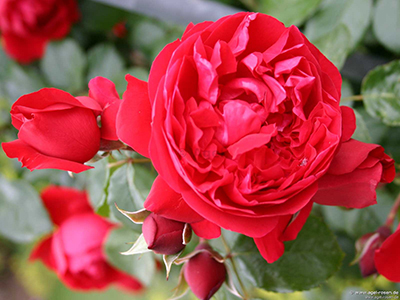
It is a bright red climber/rambler that will grow to 8 feet like R. ‘Crimson Red’. photo credit: www.agel-rosen.de
A great modern alternative is Rosa ‘Floretina’. It is a bright red climber/rambler that will grow to 8 feet like R. ‘Crimson Red’. Introduced in 2011, it is an old-fashion rose with large slightly fragrant, fully-double flowers. It is very floriferous and is an award-winning rose.

Peonies depicted in this stained glass window: Peony Window Panel, Richard Beatty Mellon Mansion in Pittsburgh, by Louis Comfort Tiffany.
Another plant found in many of the paintings is the peony. This garden gem is even depicted in this stained glass window: Peony Window Panel, Richard Beatty Mellon Mansion in Pittsburgh, by Louis Comfort Tiffany. A cultivar from the turn of the century that is still a gem in the modern garden is Paeonia ‘Krinkled White’. It was selected in 1928 by Brand A. M. and received the American Peony Society’s Award of Landscape Merit in 2009.
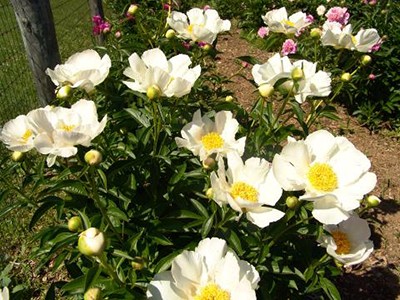
A proven performer in all regions of the country, P. ‘Krinkled White’ withstands drought well and is noted for its performance under adverse conditions. photo credit: E. Tickner
A proven performer in all regions of the country, P. ‘Krinkled White’ withstands drought well and is noted for its performance under adverse conditions. It has medium-sized single flowers with pure white taffeta-textured petals surrounding a yellow mound of stamens, with white-tipped carpels peeking through. This selection has stood the test of time and is often sold by the Mid-Atlantic Peony Society’s sale.
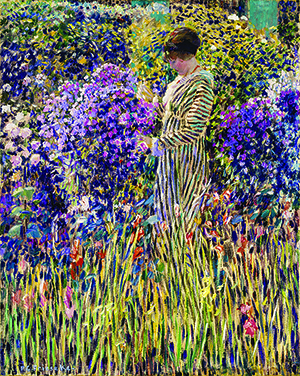
Frederick Carl Frieseke (1874–1939), Lady in a Garden, depicts phlox along with other garden plants.
Another plant depicted in the turn of the century garden is phlox. Known to modern gardeners for its susceptibility to mildew, plant breeders have introduced some great mildew-resistant cultivars over the last couple of years.
A new favorite here at the Scott Arboretum is Phlox Paparazze TM. PaparazzeTM is a stunning late spring bloomer with a mounding habit. The flush of fragrant rose-pink flowers look great in containers, rock gardens, and along garden edges. The pathways along Magill Walk are draped in this butterfly attractor.
Explore some of our gardening history with The Artist’s Garden: American Impressionism and the Garden Movement, 1887-1920 at PAFA until May 24. Scott Arboretum members receive a $5 discount (Members should contact the office for details.) Experiment with these great old/new plants in your garden.





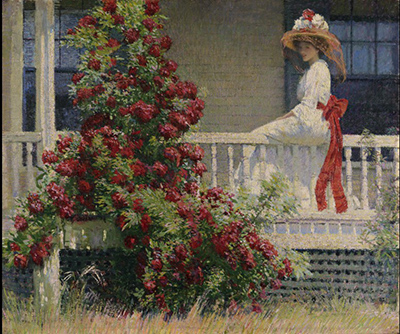
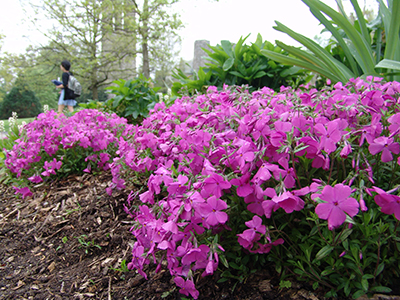
No Comments